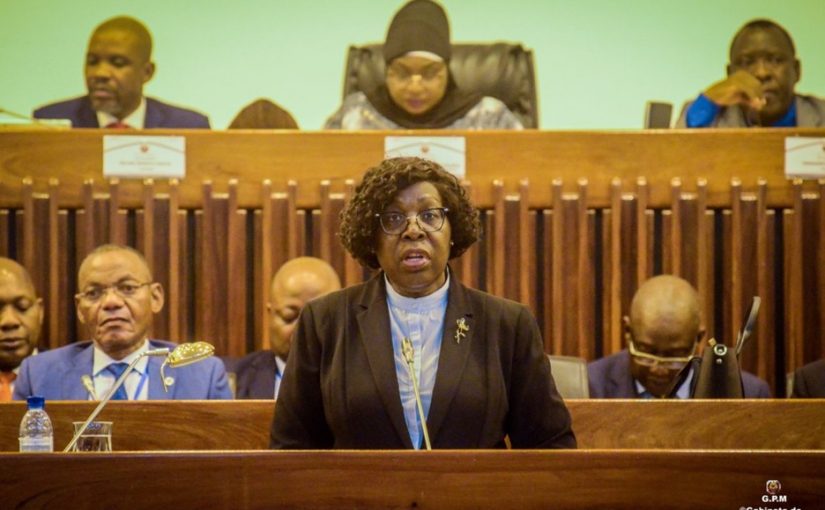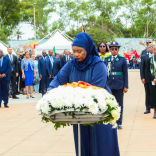Mozambique: Chapo promises to solve outstanding wage problems
Mozambique: Losses of €456 million and 50,000 unemployed after protests – Prime Minister

Photo: Notícias
Almost a thousand commercial establishments and social facilities were vandalised or destroyed in the post-election protests in Mozambique at a financial cost of €456 million and the loss of 50,000 jobs, according to the government.
“During the violent protests to date, more than 955 economic and social establishments have been destroyed, which has left around 50,000 people unemployed, a number that could still increase. In terms of cost to our economy, this situation has generated losses estimated at around 32.2 billion meticais [€452.2 million],” Prime Minister Maria Benvinda Levi told parliament, where the government is providing information to MPs this Wednesday and Thursday.
Benvinda Levi said that vandalism and destruction of private property, in addition to limiting the movement of people and goods, affected the country’s economy, and that the government was implementing measures to help it recover.
“Due to the violent post-election demonstrations, our economy contracted by 4.87% in the fourth quarter of 2024, contrary to the growth trend that had been recorded in the first, second and third quarters, which stood at around 3.2%, 4.5% and 3.68% respectively,” the prime minister added.
Levi also admitted that the national economy was severely affected by the rainy season, especially with three cyclones destroying property and killing people between December 2024 and March of this year.
Mozambique has been experiencing intense social unrest since October, with demonstrations and strikes called by Venâncio Mondlane, who rejects the election results of October 9, which gave victory to Daniel Chapo.
Since the start of the current rainy season , at least 310 people have died, 1,255 have been injured and almost 1.9 million have been affected with the occurrence of three cyclones in Mozambique, the Government announced on Tuesday.
“In this rainy season in cumulative terms we must highlight that 1,838,235 people have been affected, with the deaths of 310 and the injuries of 1,255 people, among other significant material damages, regretted,” Council of Ministers Inocêncio Impissa told journalists after the weekly cabinet meeting in Maputo.
Mozambique is in the middle of the rainy season, which runs from October to April, a period in which, in addition to Chido, which hit the country on December 14, Cyclones Dikeledi, on January 13, and Jude, on March 10, were also recorded, with the three cyclones causing around 170 deaths.
Cyclone Jude, the most recent to affect the country, entered Mozambique through the district of Mossuril, causing at least 43 deaths, 41 of which in Nampula, and also affecting Tete, Manica and Zambézia, in the center, and Niassa and Cabo Delgado, in the north.
The latest update from the National Institute for Disaster Risk Management and Reduction (INGD) indicated that at least 384,877 people have been affected.
Mozambique is considered one of the countries most severely affected by global climate change, facing cyclical floods and tropical cyclones during the rainy season, but also prolonged periods of severe drought.
Since October, 388 people have died, according to the latest figures from Plataforma Decide, a Mozambican non-governmental organization that monitors the electoral process.
The Mozambican government has confirmed at least 80 deaths, in addition to the destruction of 1,677 commercial establishments, 177 schools and 23 health units during the demonstrations.












Leave a Reply
Be the First to Comment!
You must be logged in to post a comment.
You must be logged in to post a comment.